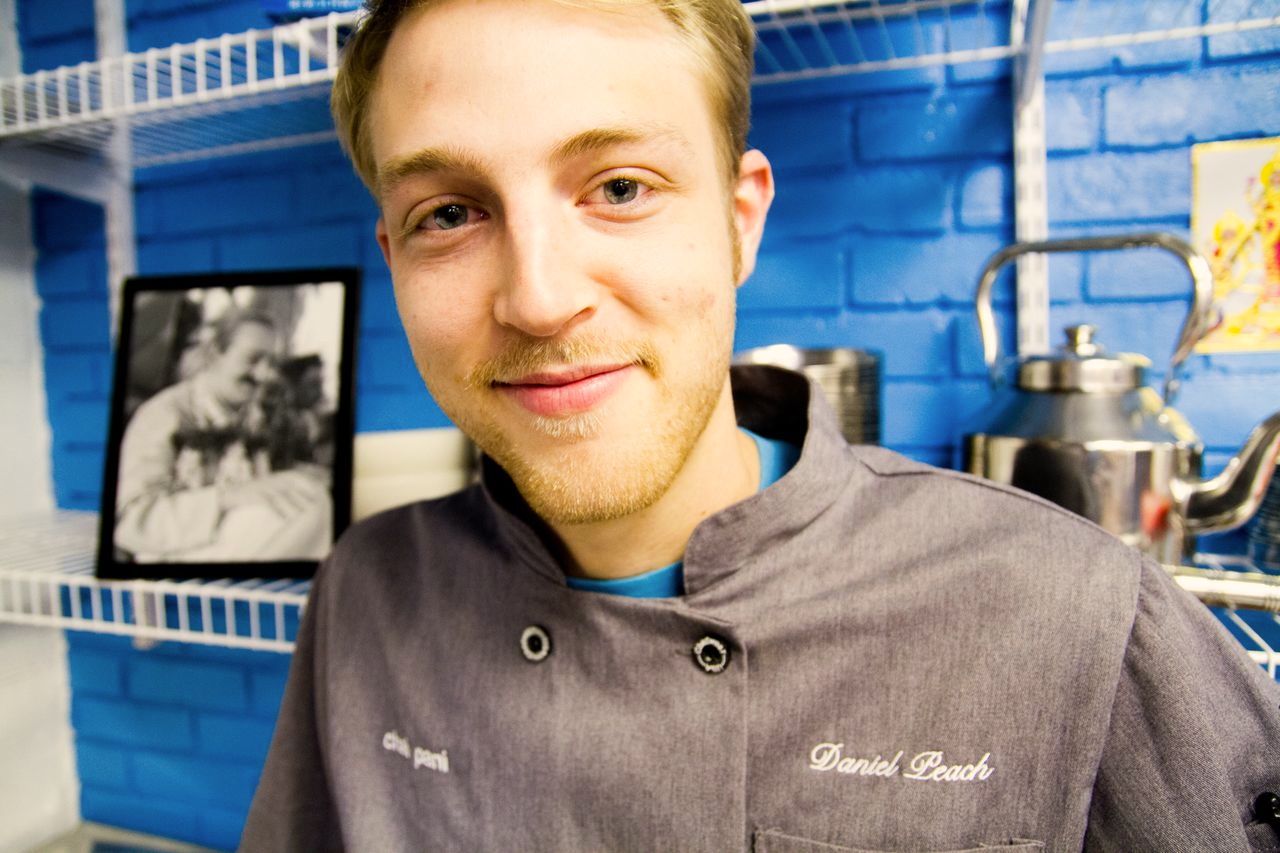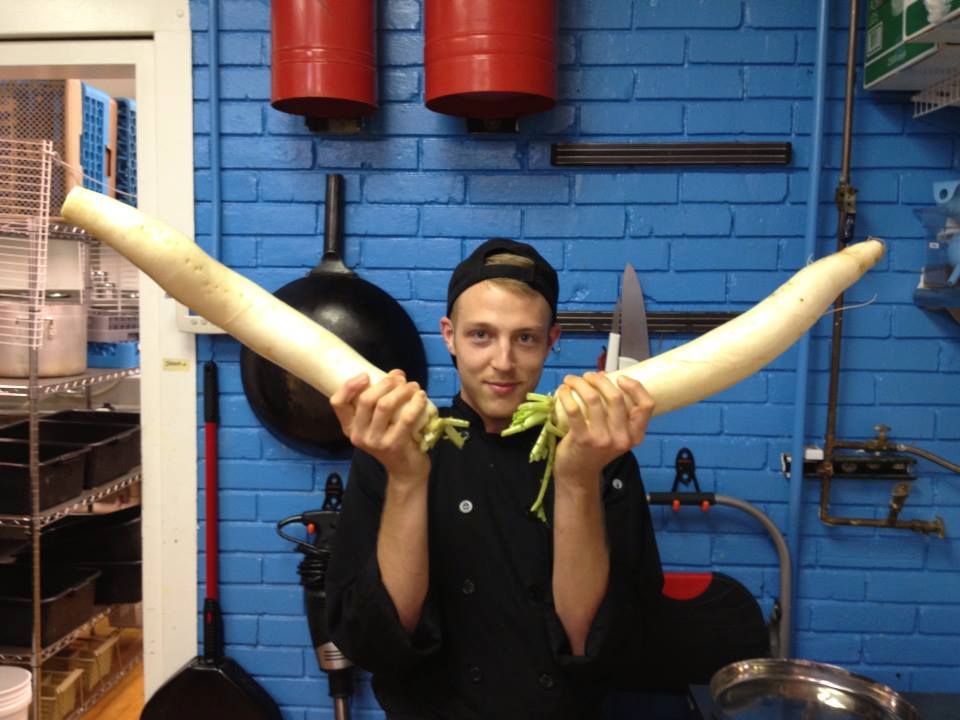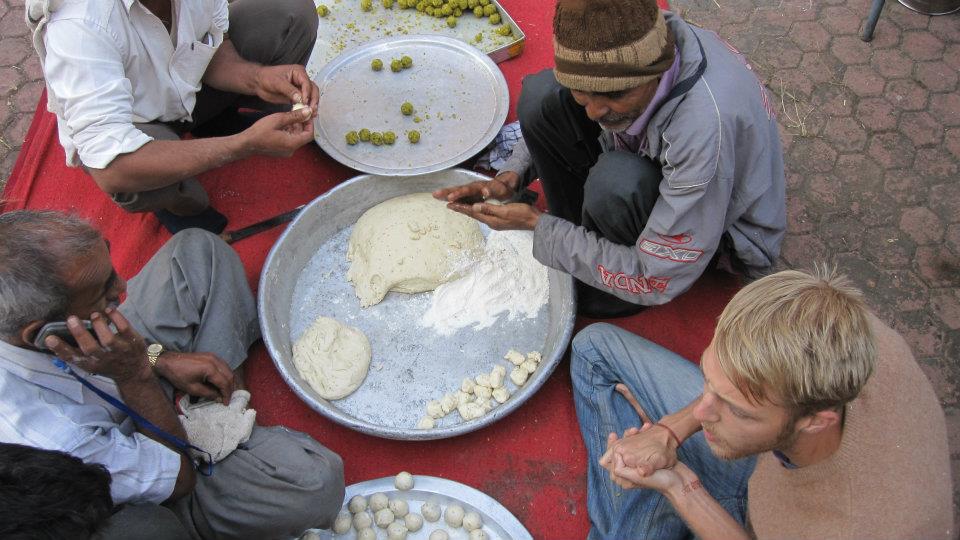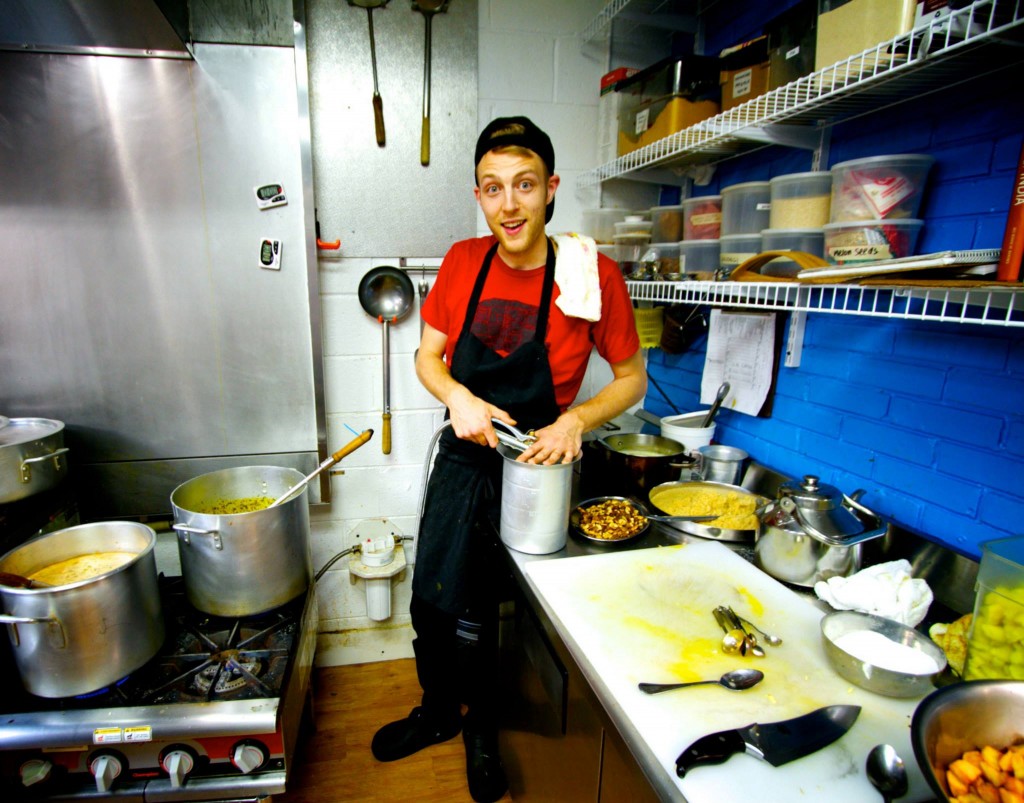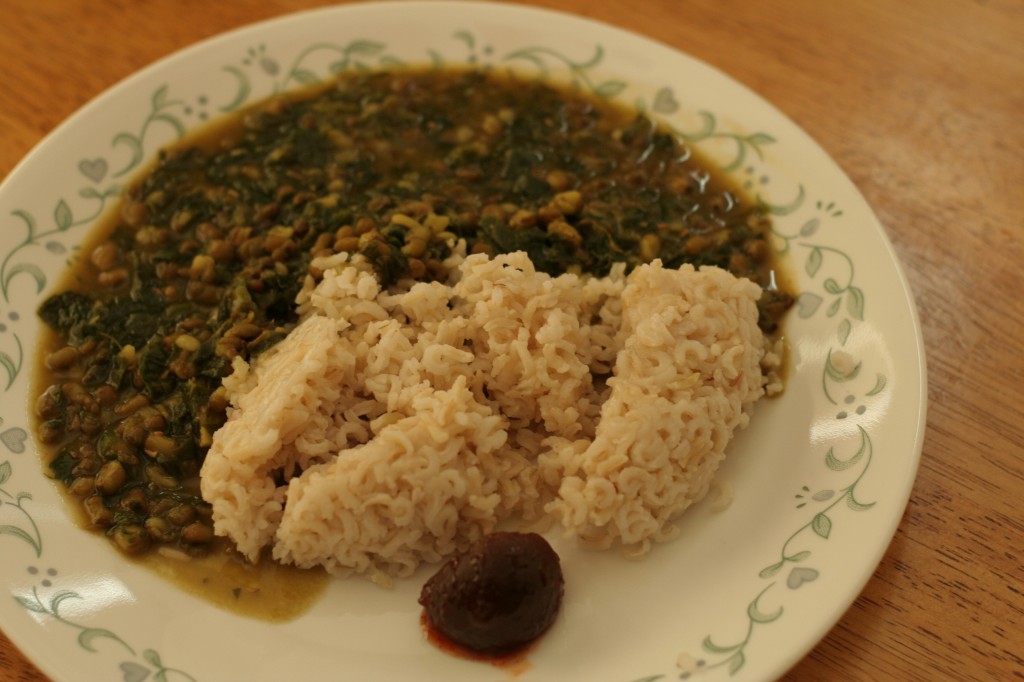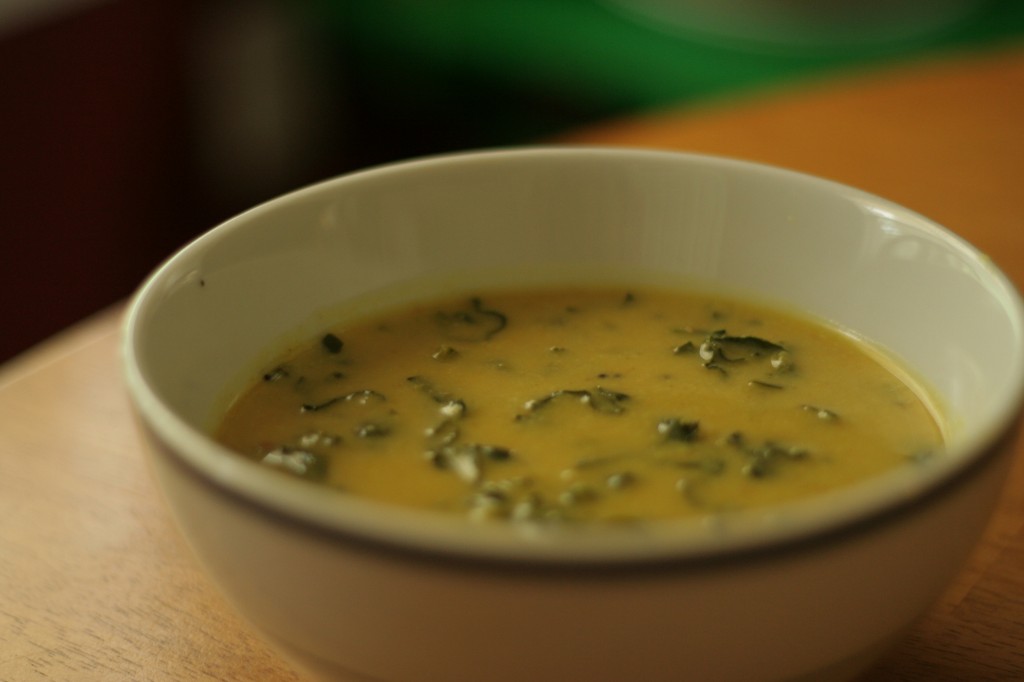(Read chef Daniel Peach’s story – Part 1 here.)
Q. Do you remember the first time you sampled Indian food? When/where was it? What was your reaction?
A: I first tried Indian food when I was 14 (2003). My friend’s dad was obsessed with this Indian restaurant in Columbia and was a regular there. We went in, and he knew all the people working there. I remember eating naan and some chicken curry and enjoying it, but it didn’t stick with me.
After that I didn’t have Indian food again until 2008. I ate lunch with a friend at an Indian restaurant called Chinar that used to be in downtown Charleston. Again we just had some naan and a cashew chicken curry. It blew me away; I felt like the spices were intoxicating.
I don’t feel, however, that I really tasted Indian food until I got to India. The first meal I ever had in India was a masala dosa at a little restaurant in Mumbai. I remember being unable to contain my smile. I loved it. Last year when I was in India, I woke up the first morning of my trip and had some kanda pohe on the street in Andheri (East). It was so simple and yet it almost moved me to tears. I think most of it was just emotional, as I was happy to be back in India since it had been a year since my last visit. Anyhow, I am off on a tangent now, but hopefully that answers your question.
Q. How does an American get a job as a cook at an Indian restaurant in India? 🙂 How was that experience?
A: I worked in several restaurant and ashram kitchens in India and all of them have different, unique stories behind them. Most frequently it would go like this: I’d eat somewhere and love the food, then ask to talk with the owner. I’d then explain to them that I was a chef back in the US, working in an Indian restaurant, and looking to learn more recipes and cooking techniques. Several times I was invited into the kitchen without having to ask, and other times I had to do some convincing that I didn’t want any money and was just there to learn. The fact that I spoke Hindi was a huge bonus, as people who works as cooks in India don’t generally speak English.
Last year I worked at a very famous restaurant in Kolkata called Kewpies. The owner, Rakhi Purnima Dasgupta, is well known in the city, and the restaurant is in the bottom floor of her ancestral home. Her mother wrote the first Bengali cookbook in English (Bangla Ranna: The Bengal Cookbook). I contacted her several months prior and she agreed to having me come and work in the restaurant during Durga Pooja. That was the most formal experience, whereas the trip before that I worked in a small restaurant in Visakhapatnam, Andhra Pradesh near the railway station. I stopped there one day for lunch, and was blown away by the food. I met the owner and not only did he let me work in the kitchen but even gave me a free room in their hotel in the building above the restaurant.
My experiences have been as varied as the places I’ve worked, but there are a few commonalities. The first of which being I learned that the people working as cooks in India are for the most part very low class citizens. Most of them make about RS 120 ($2)/day and work from sunup ’til sundown. They generally live upstairs from the restaurant, usually sleeping on the floor and sharing a small space with all of the other cooks. Because of their low status in society I realized a lot of them couldn’t wrap their heads around the fact that some guy from the US was interested in what they were doing. I got the impression from people after I had been in the kitchens for a while that, by me being so interested in what they were doing they discovered a new found pride in their craft. Some of them had families living in villages near town while some were young and on their own. They all had incredible work ethic and always, no matter how busy the restaurant got or how much work they had to do, maintained a positive attitude. That definitely put things into perspective for me, and helped me see how to handle the challenges I face in my job with grace. So many people working in restaurants in the US just stay stressed, whereas the folks in India worked just as hard (sometimes harder) and did so stress free.
I also found that restaurant kitchens in India are much less hygienic than restaurants here in the US. In a lot of ways, it is not a big issue and people traveling to India should not be worried about eating out (though I would stay away from meat). All of the produce is delivered in the morning and cooked that day. Everything is really fresh, mostly because there is no refrigeration. That being said most kitchens, even in restaurants that seem ‘nice’, are fairly primitive. I used to work at a sweet shop in Rishikesh, and the walls were covered in dark grease because they were frying enormous amounts of sweets in pure ghee every day. I came back a few months later, and was impressed to see the walls a shining silver color. I asked a friend if they had cleaned, and he laughed saying, “No, we just painted” (over the grease).
The Health Department in India is, like the rest of the government, corrupt. If a health inspector should visit a restaurant for an inspection, they usually just take a bribe, make a few comments, and leave.
Lastly, I found that due to the sheer availability of cheap labor in India, most kitchens have an enormous amount of people working in them. This allows people to become very specialized in one skill, which I think has allowed Indian food to evolve so much. If someone is doing the same thing all day every day for years, they eventually figure out incredibly efficient systems and get that product to a point near perfection, something that is not possible in a restaurant where the average cook is responsible for making 20-30 different things each day.
(All pictures, courtesy Daniel Peach.)
